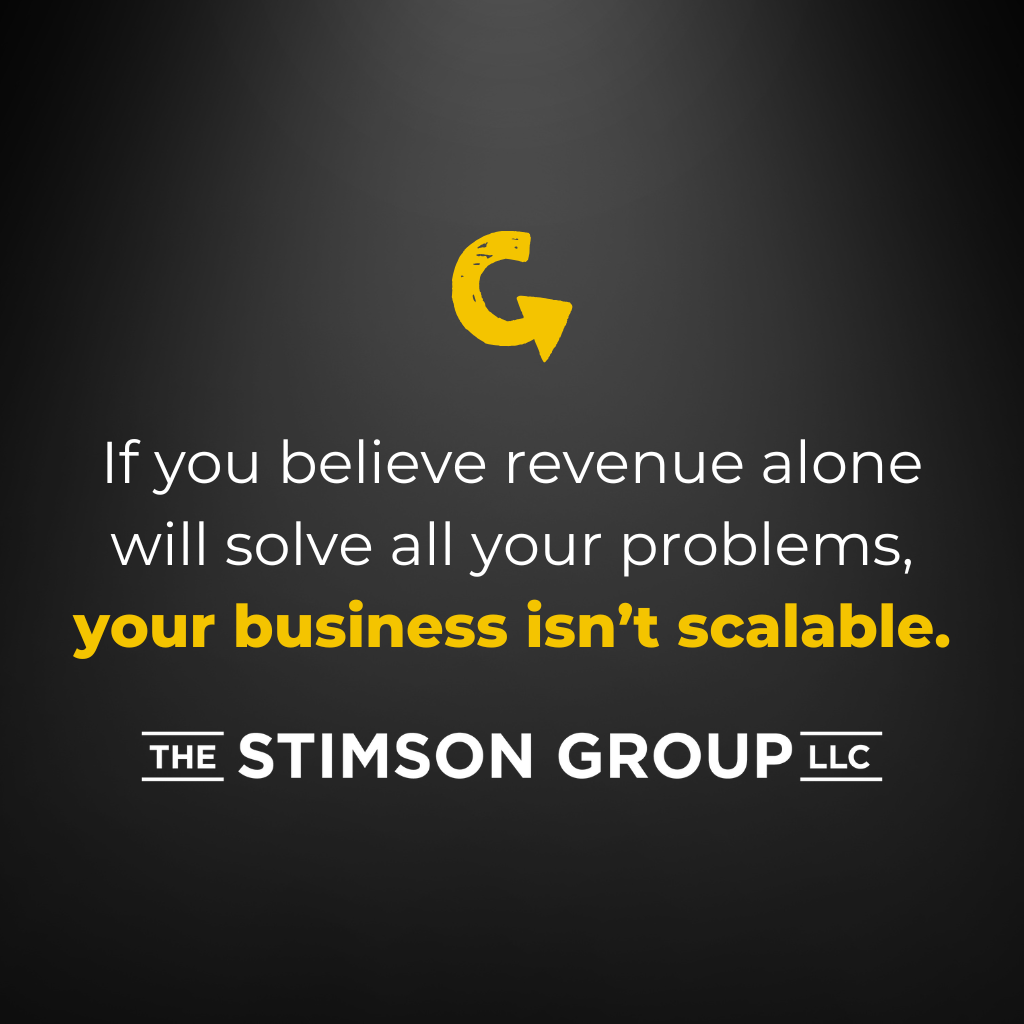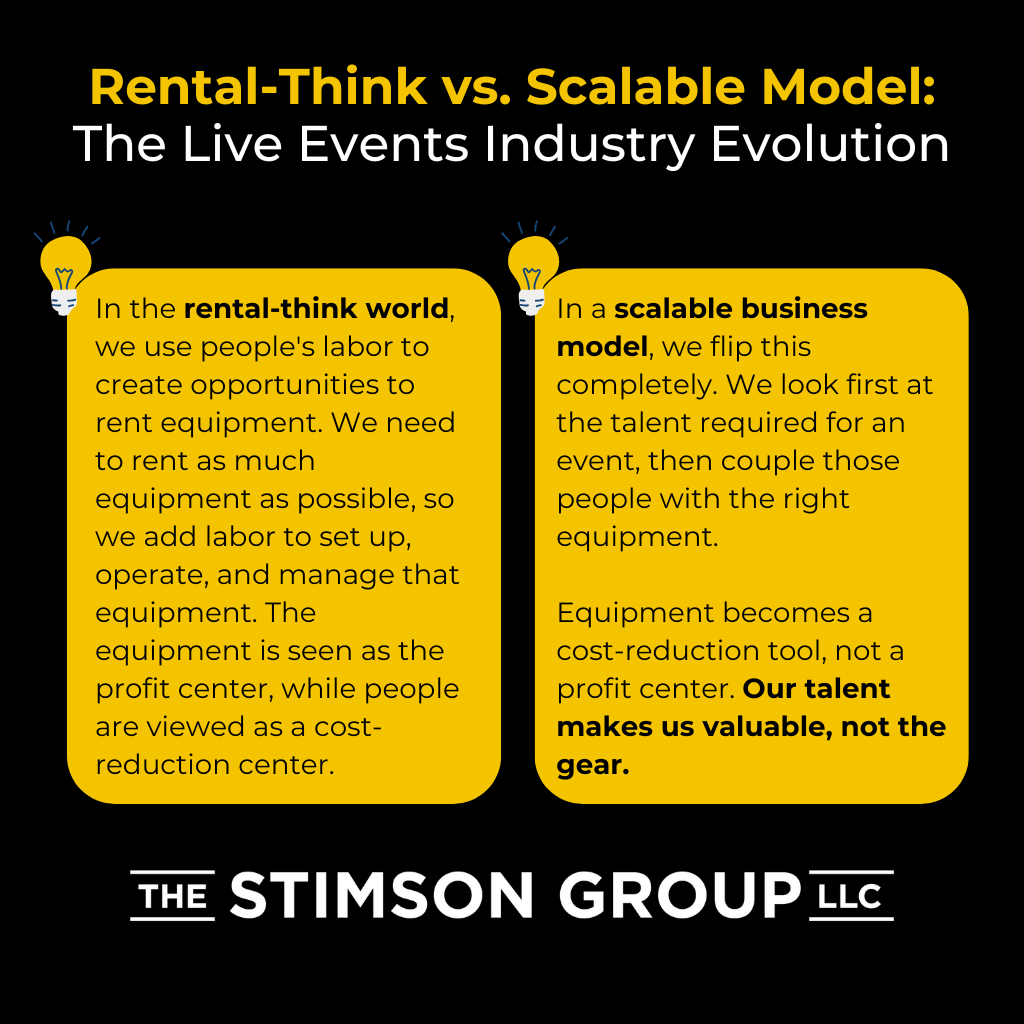
Listen instead on your Monday Morning Drive:
The live events industry is at a crossroads, and I’ve made a difficult but necessary decision: I can no longer support the traditional rental-think business model.
I announced this in July of 2023, and over the past 18 months, I’ve worked tirelessly to help companies transition away from this outdated approach. Now, it’s time for me to focus on owners who are ready for real transformation.
Why Our Industry Is Stuck in the Past
You might wonder why so many production companies still cling to traditional business models despite clear signs of industry evolution.
The answer is simple: We haven’t replaced it with anything concrete. While we’ve introduced new ideas, our tools, language, and philosophy remain deeply rooted in old-school, rental-think platforms.
This isn’t just a habit — it’s a mindset ingrained in generations of business leaders. Creating a new language, new math, and different ways of talking to clients can feel daunting.
But if you want a scalable business that’s easier to grow, easier to manage, and more profitable, you must break free from this cycle.
Signs You’re Still in Rental-Think
If you believe revenue alone will solve all your problems, your business isn’t scalable.
You think revenue will solve all your problems because your overhead is too high. Your overhead is too high because your processes are tied to rental-think.
If you look at revenue without considering gross profit, you have a rental problem. And if you felt that all you needed in 2024 was one more big show or one more good month to make it a good year, you’re not operating a scalable business.
Scalable companies have good years every year. A scalable company can have a better year, but they’ll never have a bad year. Meanwhile, rental companies can have bad years and horrible months.

Here’s a common example I encounter: business owners proudly declaring that all their jobs earn 50% gross profit, as if this uniformity indicates success. Actually, it suggests you’ve engineered your numbers to fit a predetermined outcome. A truly scalable company will have jobs ranging from 20% to 90% gross profit because they understand how to maximize return on gross profit across their entire operation.
Scalable companies measure the incremental gross profit of every opportunity. Meanwhile, companies suffering from rental-think don’t know what the gross profit of a job will be until it’s over, so they sell that job in such a way that it won’t deviate from the norm so they don’t have to feel insecure.

The Fundamental Shift: From Equipment to Talent
The most critical philosophical change involves how we view our resources.
In the rental-think world, we use people’s labor to create opportunities to rent equipment. We need to rent as much equipment as possible, so we add labor to set up, operate, and manage that equipment. The equipment is seen as the profit center, while people are viewed as a cost-reduction center.
In a scalable business model, we flip this completely. We look first at the talent required for an event, then couple those people with the right equipment.
Equipment becomes a cost-reduction tool, not a profit center. Our talent makes us valuable, not the gear.
Building a Truly Scalable Operation
Consider this fundamental difference: A rental company needs many people of middling talent and expensive, fancy equipment. A scalable company needs fewer people of extraordinary talent who can effectively outsource additional support when needed, understanding that equipment is readily available.
The key is leveraging your best talent across all shows, not just the biggest ones. In the traditional model, if your best show person is out on the biggest show of the week, none of your other shows benefit from their expertise. That’s where the rental model fails us.
In a scalable model, we anchor our top talent and make their expertise available to all jobs. Every process, tool choice, talent selection, and event planning decision goes through a team of highly skilled individuals. Every job becomes equally important.
Recognizing When Change Is Needed
Here’s a simple test: During your busiest week or month, are your stress levels through the roof? Do your people work ridiculous hours and need three weeks to recover afterward?
That means you’re still operating in rental-think mode.
I often use this analogy: You have to believe in diet and exercise before anyone can help you with diet and exercise. Similarly, you must recognize and believe in the need to abandon rental-think before you can successfully transform your business.
Moving Forward
This is why I’ve made my stance clear: I want to work with people who have already turned the corner — those who understand it’s their responsibility to break free from the rental mindset. I can help you optimize and grow, but I can’t convince you to make the initial shift.
The future of our industry depends on embracing this evolution. The choice is yours: Continue with an unsustainable model or embrace a more scalable, profitable future.
It’s time to stop teaching customers to be price shoppers. It’s time to stop participating in the race to the bottom. Most importantly, it’s time to build a business model that truly scales.





Leave a Reply